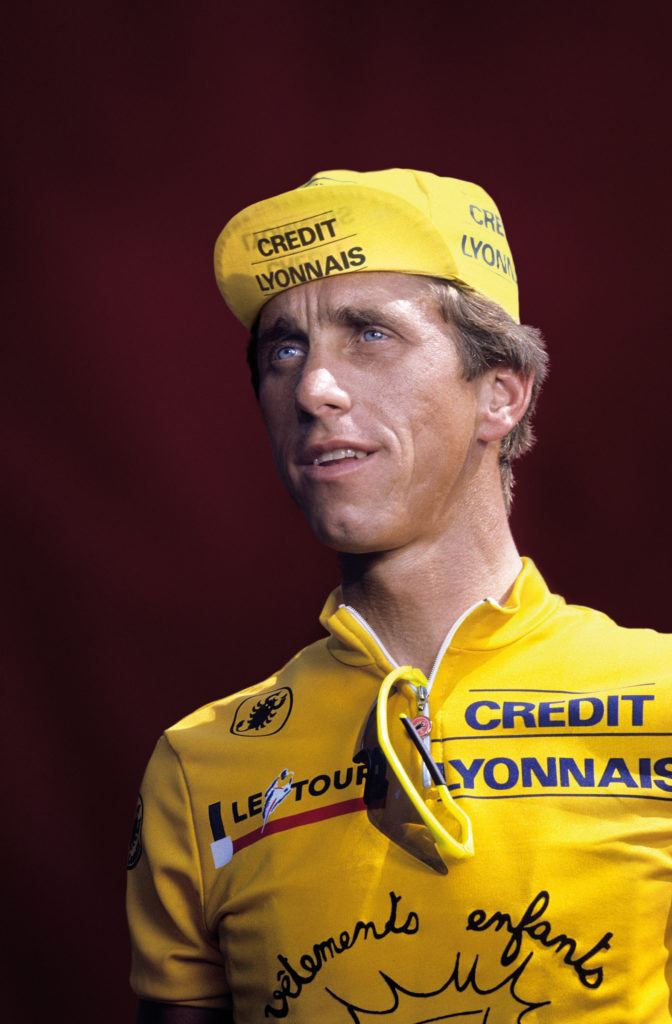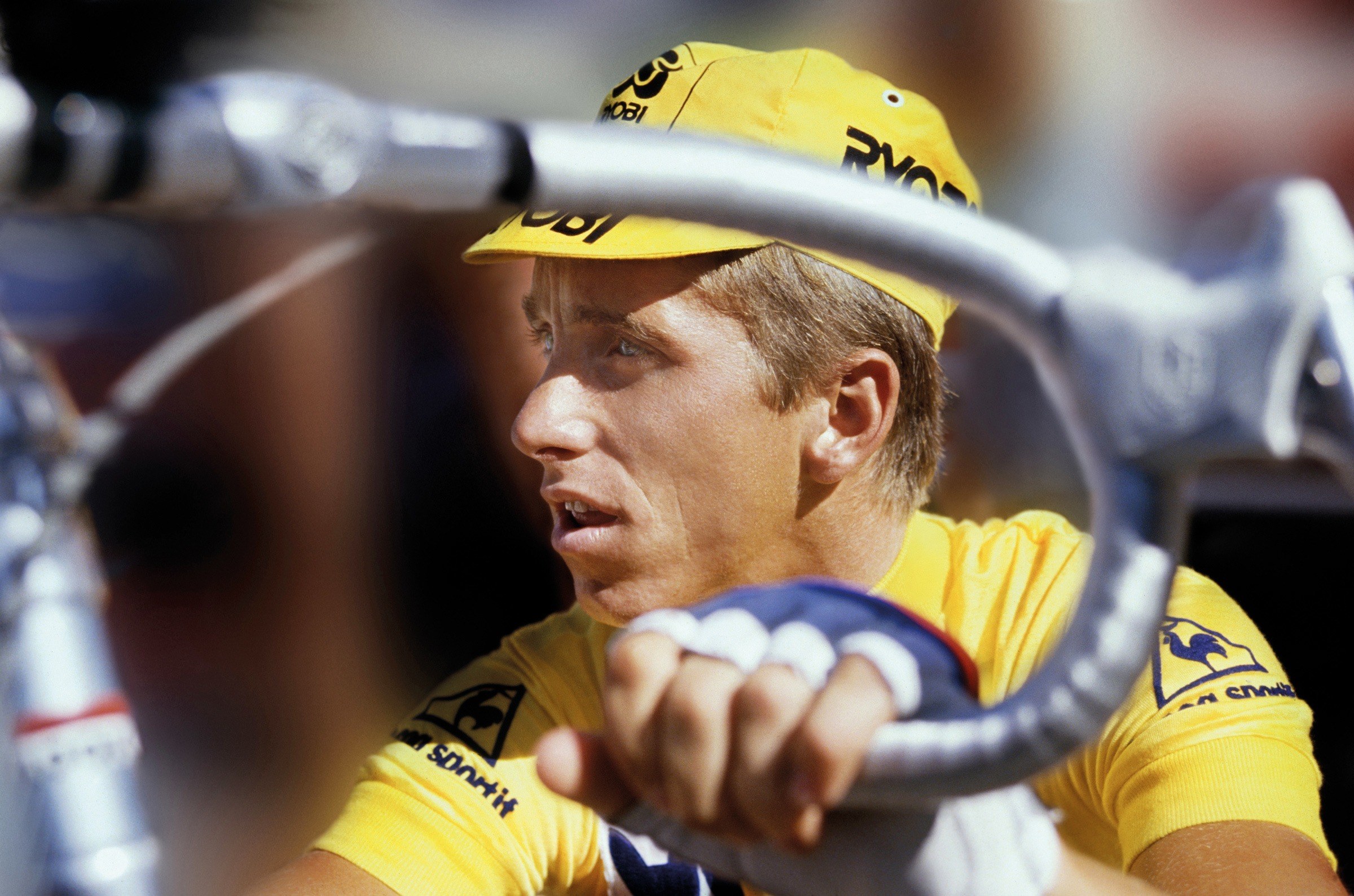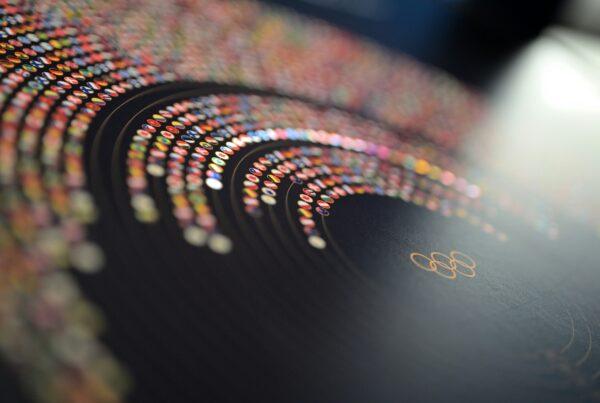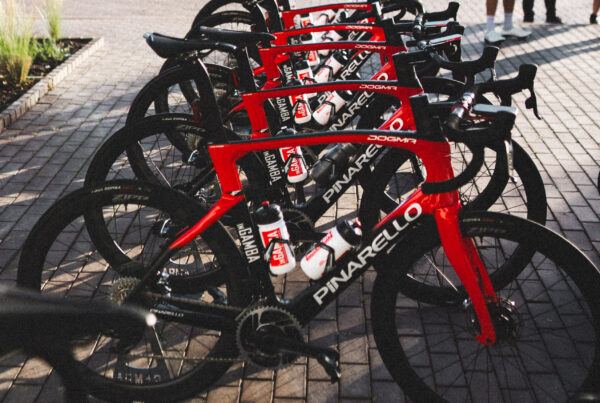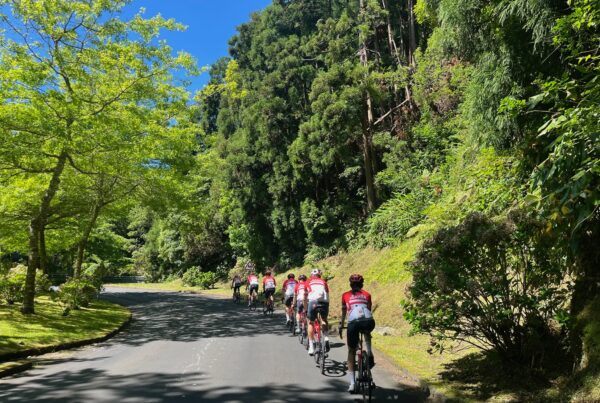Spending time with America’s greatest bike racer made Guy Andrews long for a time when the pro peloton had a bit more personality.
When people think of American bike racers, Lance Armstrong and Greg LeMond are the first two to come to mind. Many see them as similar characters: Driven, hard-nosed, and unremitting. Some see them as damaged. The truth is probably in-between. I wrote a book with Greg, but I didn’t really write about him. I didn’t want to. I knew his story before cycling and after cycling and it didn’t really interest me. I saw most of it as private anyway. It was his career as a bike racer that really fascinated me, not just his palmarès, but also the fact that he changed everything in cycling, from bike technology to team management. He was the unlikely catalyst for change from a parochial backwater sport into today’s worldwide media circus.
During our time together, I learned a lot more about him. I learned that he had tons of respect and admiration for his teammates and rivals, how much he loved the cobbled classics, and how some of the history of his career has often been ignored, his ability enabled countless riders to break into the closed shop of European cycling and change the whole structure for good.
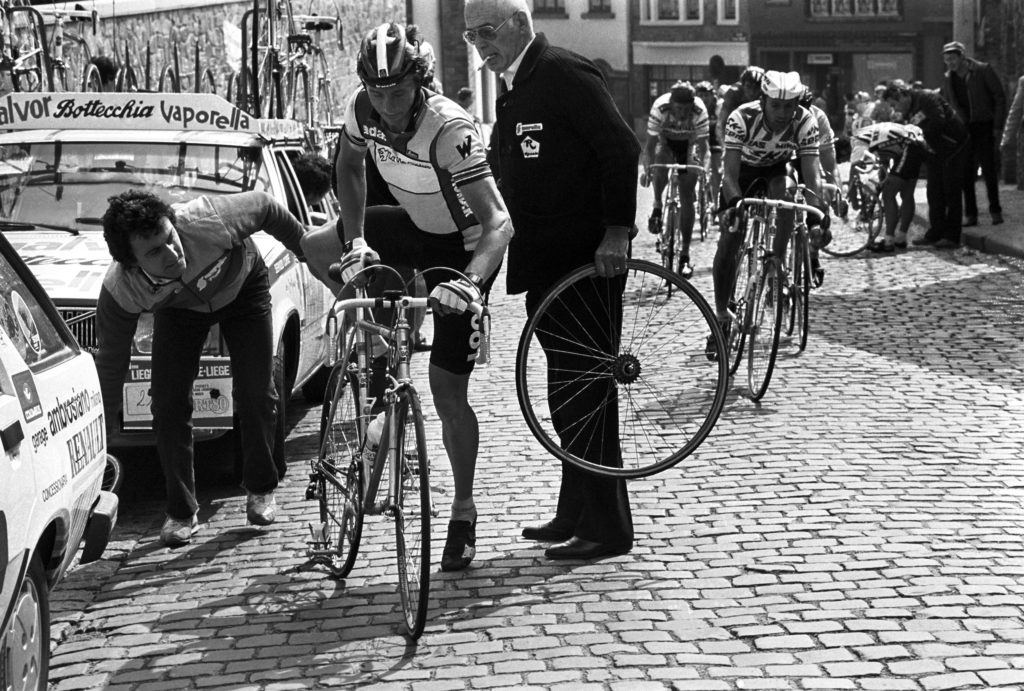
Then there was the backstory. When he and his wife Kathy came over to Europe with next to nothing, he fought to get in the team, put up with favoritism, xenophobia, and the language barrier. People say he had it easy, but when you hear them talk about those times, it sounds like the dark ages.
I first interviewed him in 2007, at the height of his fight with Armstrong. I was surprised by how much energy he still had for the sport. He wasn’t jaded by the noise, he was engaging, charming and delighted to talk about cycling in the 1980s. I then decided I’d like to do a book about his racing career, so I went to Pressesports HQ in Paris and had a look through the archive. There are thousands of racing images of him. On the bike, he was usually on the attack. Off it, he was usually laughing. To give the project life, I thought a pictorial tribute was the right route, because sometimes the cliché is true: A picture paints a thousand words. I also realized there was a lot more to Greg than the Tour de France. The title of the book, Yellow Jersey Racer, is a little tongue in cheek, because he wasn’t the one-trick pony that people paint him up to be. But it’s also fitting, not only because of his success at the Tour, but also because at his first race, he wore a yellow jersey (which obviously got him a lot of abuse).
A few years later, I was sat in a hotel in Paris with Kathy, and she was apologizing profusely, because Greg was late. That wasn’t unusual. Those who know him will tell you that Greg has a habit of running late. Hours before he’d gone to see some random French bike dealer miles away, and he’d taken a Velib city bike to get there. Eventually, he rushed into the lobby of the hotel, sweaty and apologetic. He was late for me – and even later for the car that was waiting to take him to Roland Garros for the tennis. No matter, he still sat to chat for an hour or so. The book was stalling, so we agreed to meet at his house in Minneapolis. That would be easier, we agreed. No distractions.
Fast forward a few months and I was in an insipid Minneapolis hotel, jet-lagged and staring at the ceiling, unable to sleep. Greg wasn’t home. He’d been at a bike show, ended up staying over for a few days. Kathy assured me he’d be there soon, but I was conflicted and worried about whether or not I could make the book at all. It’s hard to be mad at Greg though. In the time he was away, Kathy showed me around their vast collection of racing memorabilia. Old bikes, skin suits, jerseys (literally boxes of them), aero helmets, pedals, postcards, and a lifetime of junk that would probably set eBay on fire. So I made myself useful, raiding the photo albums that Kathy kept finding in the the basement, and digging around in crates of old magazines and newspapers. Back home in England, that’s what’s known as a busman’s holiday.
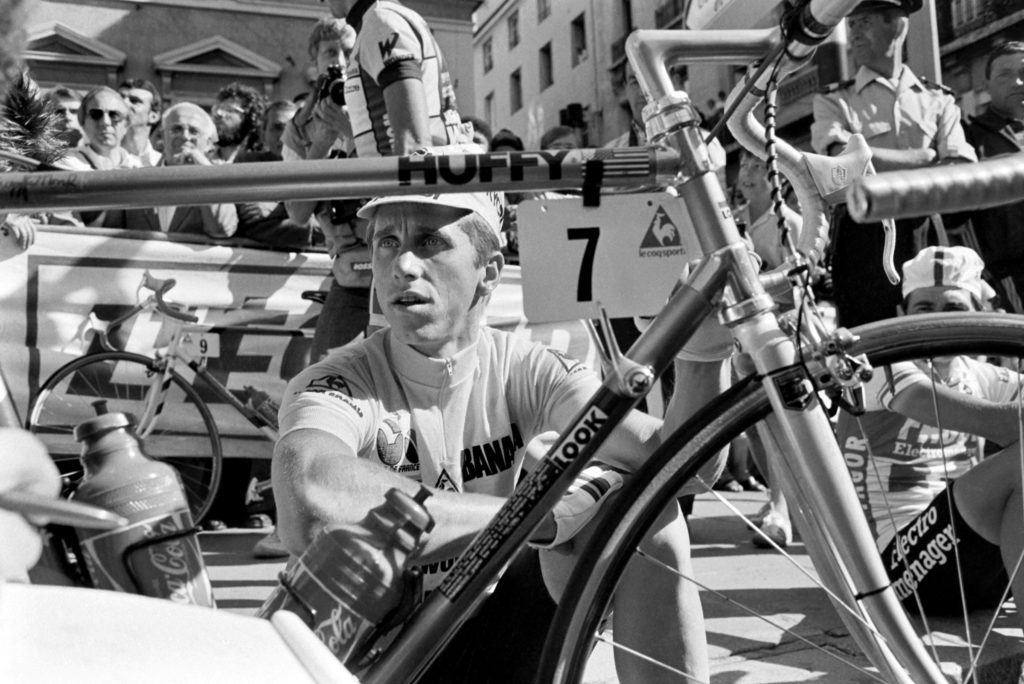
When Greg finally appeared, he was again apologetic. He was also very keen to get started. We spent the first few hours dragging all his bikes out of the cellar to photograph them outside. We had the time trial bike that he won the 1989 Tour de France on and he was telling me all about how he thought Cyrille Guimard was the real genius of professional cycling… and in all my years of writing about cycling, this was one of the few moments when I was lost for words. If you’d told the teenage me that I’d be doing this 30 years after first seeing the Tour de France, I’d have laughed.
A few days later, we were in his kitchen discussing motor doping – he had a bike made and he knew what it was capable of – and it was proof enough for him that ‘something’was going on in professional cycling. I was less than convinced. Kathy and Greg looked at me as if I wasn’t paying attention. Turned out, none of us were. A week or so later, Femke Van den Driessche, the Belgian cyclocross racer, got busted with a motor in her bike. I felt more than a little naive.
In cycling, the more bizarre the story becomes, the harder it is to understand how we got here. But it’s really always been this way. Racing is cheating: You cheat the wind, draft whatever moto or team car you can, cheat your rivals into thinking you’re finished, cheat with the sticky bottle, you cut corners, lighten up your bike. The so-called marginal gains. Call it what you will, cycling is far from corinthian.
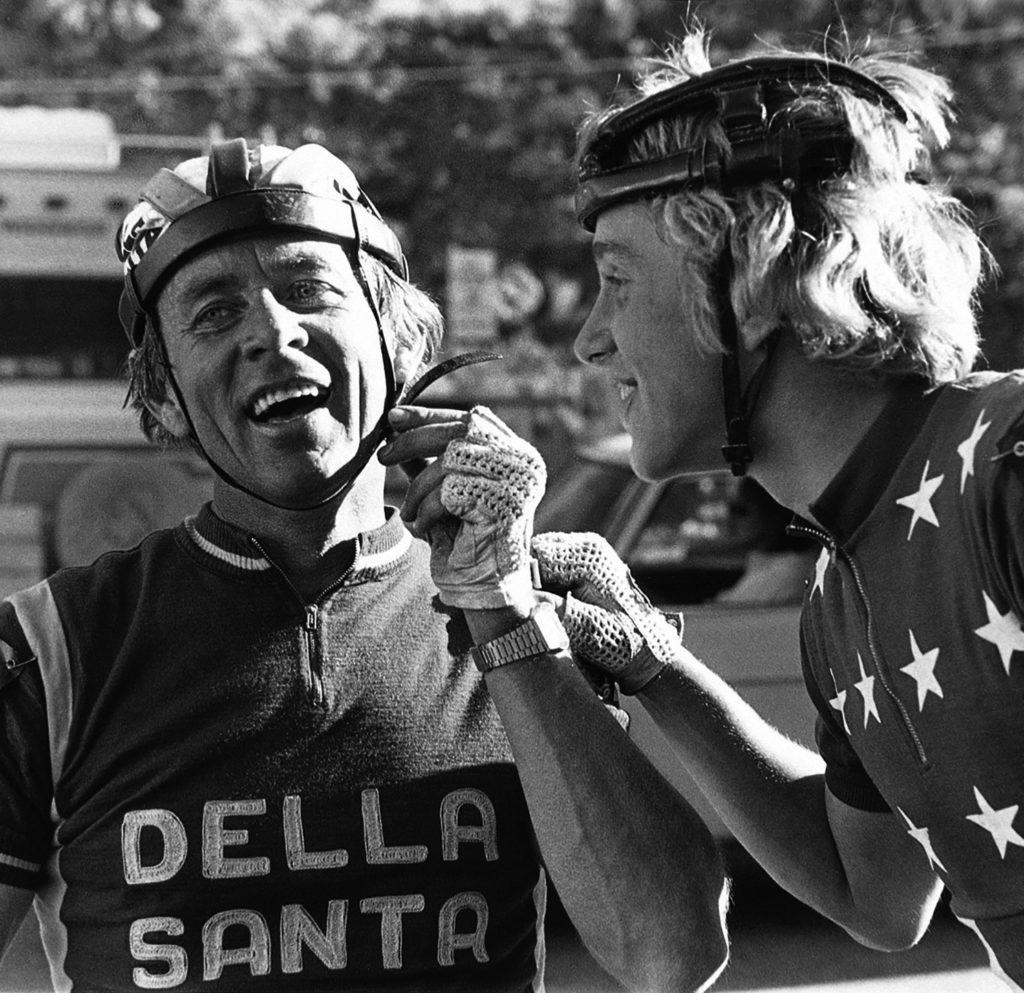
I was never a huge fan of Greg when he was racing. I’d always supported the riders who had little or no chance of winning the race, so the GC contenders were never of any interest to me. But I realize now that he was the type of rider I’d always prefered: The underdog, the misunderstood maverick, the outsider. And everyone I spoke to when I was researching the book, even those who he’d had issues with or were his bitter rivals, said that Greg was a really decent human being. He always stood up for the little guys, liked to joke around, and was always the life and soul of the party.
Perhaps the most enlightening experience of finding out about Greg LeMond happened when we launched the book in Chicago. Andy Hampsten, the 1988 Giro d’Italia winner, had told me that when they were racing on the same team, Greg could hold up an autograph line for hours. Few people I’ve met have his ability to talk, talk, and then talk some more. True to form, the whole evening had been about Greg talking to people. The book signing session took up around three hours, because he spoke to everyone – he even signed a bike courier’s arm, who then rushed off to an all-night tattoo parlor to have it inked-in.
We went for a bite to eat afterwards. It was very late and when we came out of the restaurant, there was a homeless guy on the sidewalk asking for money. Whilst most of our party ignored him and shuffled past, embarrassingly with their hands in their pockets, Greg stopped and started talking to him. He totally engaged with the guy, chatting about normal stuff, the part of Chicago where he was sleeping rough, how cold it gets at night. What stuck with me was that it wasn’t small talk – it was genuine conversation. He gave him some money and as we walked away, he said to me that most “lost” people don’t need drugs, or alcohol or religion, they just need someone to talk to them.
1989 was undoubtedly the best Tour de France in recent history. If you don’t know it, take the time to watch the race on YouTube, it’s well worth it. Listening to Kathy and Greg recall that final day is incredible, it was clearly their once in a lifetime moment that they treasure the most. Even still, Greg’s respect and warmth for Laurent Fignon is obvious, they fought a wonderful race and remained friends despite the painful ending. Fignon had a similar attitude to Greg when it came to bike racing too. In his excellent book, We Were Young and Carefree: The Autobiography of Laurent Fignon,he talked candidly about cycling, in a way that few have done before or since. His open war on the French press culminated in a heart-on-his-sleeve bottle throwing incident at a group of photo-motos at the Tour, even when his form was poor he still had the strength to direct his frustrations at those who revelled in his downfall.
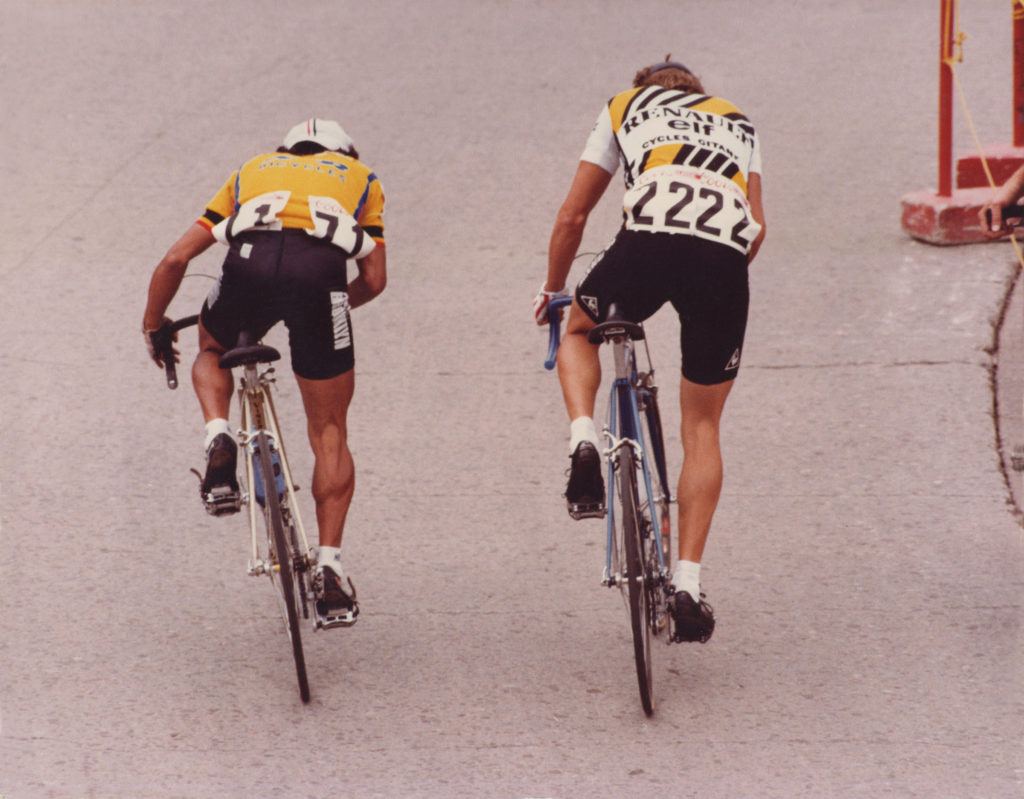
There’s another scene on YouTube that I watched again and again whilst I was researching the book. It’s from the 1985 Tour de France. Greg has just been told on the road that he can’t go for the win in the Tour that day. His late escape with Stephen Roche had its wings clipped by the La Vie Claire bosses, because they wanted Bernard Hinault, Greg’s team leader, to win.
The part I love was filmed shortly after the stage, behind the finish line, away from the spectators but still in front of the cameras and huddle of journalists. He’s openly arguing with his Directeur Sportif Paul Koechli and he’s getting nowhere. Frustration, rage, and betrayal are etched across his face. He’s uncomfortable and looks as if he’s about to punch someone, anyone, but most probably, Koechli. Greg’s mad; he’s mad in a way that makes him look a little like a teenager who’s just been grounded, with injustice eating him up inside. And if he knew then what we know now, he’d probably be even madder. I love it because he gave a shit enough to speak his mind, no matter who was there to hear it.
We’ve recently finished a translation of Marco Pastonesi’s book on Marco Pantani. In the text several of his friends and teammates describe their experiences with him and his legacy. The tragedy of Pantani’s tale is that we learn what happens when everything leaves him and when it all goes wrong. Yet for all his faults, and whatever you think of him, Pantani’s joy was how he raced and the respect that his peers had for him, how he dealt with people and how he respected his rivals, in the same way Greg did. The thing that stands out in all three cycling biographies – LeMond, Fignon, Pantani – is their character, their ability, and their vulnerability. The way they wore their hearts on their sleeves, on and off the bike, and the way their rivalries spilled over into the rest of their lives. It’s the complicated warts-and-all world of cycle racing, laid bare.
Maybe this vulnerability and honesty makes riders like that seem a little more human, like one of us, but my point is that in these days of the press-trained robot rider, nobody would dare to express any emotion in front of journalists, never mind throw a bottle at them. Riders don’t speak out anymore, or stand up for one another or, it seems, race with their own instincts. Disagreements within teams are now sorted out behind the heavy curtains of the team buses and we rarely see the fights, the rivalries and bitter struggles for leadership. It makes you realize that cycle racing is less emotional than it used to be – and as a result there’s less spirit in it. Perhaps that’s why the races seem to have lost their edge, and with it, so much of the drama, too.
–
Guy Andrews is a writer and editor. He was the founder of Rouleur magazine, and co-founder of the award-winning Bluetrain Publishing. His most recent books include Magnum Cycling and Greg LeMond: Yellow Jersey Racer.
